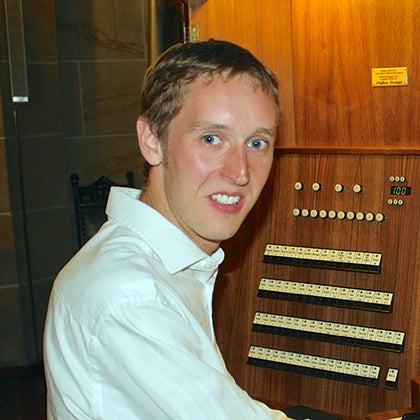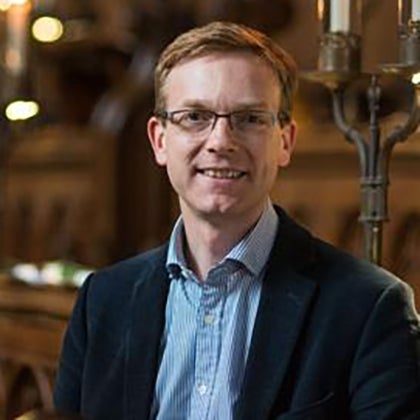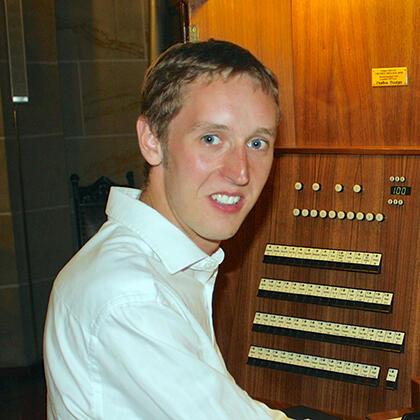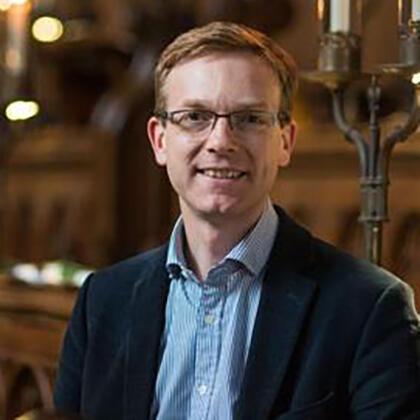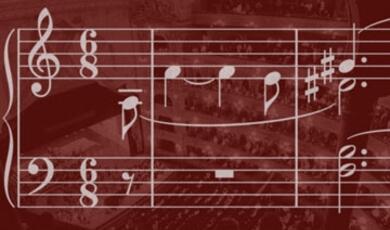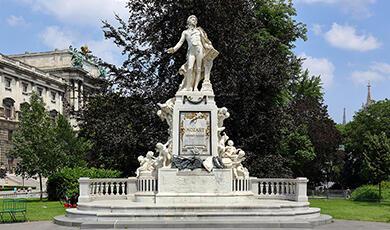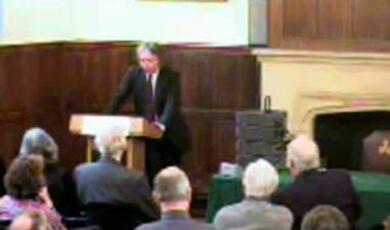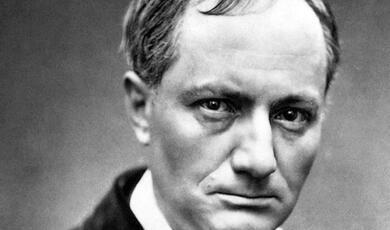The German revolution in English organ technology
Share
- Details
- Transcript
- Audio
- Downloads
- Extra Reading
This lecture continues the series' exploration of the history of the organ, focussing on how it developed between the eighteenth and twentieth centuries, particularly in regard to the innovations in organ-playing from Mendelssohn and Bach that led to a revolution in the design of an organ.
Download Transcript
The German Revolution in English Organ Technology
Robert Quinney
6 October 2010
[Music plays]
Good evening, and welcome to St Mary-at-Hill. That solemn, sombre piece we have just heard Robert Smith play is a dirge, composed by and performed by Thomas Attwood, the organist of St Paul’s Cathedral, for the funeral of Admiral Lord Nelson on 9th January 1806.
Attwood is proof that English music was not entirely insular, nor devoid of external influence, in this period and he lived a long life, well into the period that I shall cover in this lecture. As many of you will know, Thomas Attwood was a pupil of Mozart, and indeed, his contribution to Mozart’s studies is great because he made a number of notes on his lessons with Mozart which are a great insight into Mozart, the teacher.
However, the organ that Attwood played in St Paul’s, and all the organs in England at that time, in the early 19th Century, were very much of an inward-looking, insular tradition, and it was only later in the century, in the 1830s and 1840s, that influence from abroad began to revivify organ culture in this country. Richard Townend’s lecture left us with organs in various cultures serving the liturgy of the church, whether it was a Protestant liturgy or a Catholic liturgy. In the period that I am covering there is a polarisation between the organ as a liturgical servant and as an independent instrument and musical voice in its own right.
The real significant difference between the late-18th and the middle-19th Century is that people in this country and all over the world were travelling very much more, and they were therefore open of course to influence from all over the place. Attwood is an example of that and every enterprising young musician, especially somebody who was well resourced financially, travelled extensively in the early-19th Century.
Yet, until about 1830 or 1840, this was not reflected in the organs, and indeed, these musicians on their travels were often very quick to draw comparisons between organs from England and the organs they heard on the Continent, very much to the detriment of the latter. Charles Burney, for example, in the late-18th Century, travelling very widely in Europe, remarked on the “intolerably coarse and noisy tone” of German organs. A rather gentile word that occurs repeatedly in comparative descriptions of organs in England with those on the Continent is “refinement”. It is absolutely true that, in comparison to the great organs of the great hall churches of Germany and the Netherlands, or the great churches of Paris and the cathedrals of France, the organs in England were remarkably gentile. They were gentle for a number of reasons which are beyond the scope of this lecture because I am discussing the development away from those organs.
It is certainly not for want of trying to make them fill the buildings that they remained rather gentile. Indeed, a main problem that faced organ builders was how to get gentile organs to fill large buildings and halls such as York Minster. You could put pipes facing in different directions and try duplicating the stops, but that is like duplicating the potatoes that you serve with a meal. You could add any number of potatoes to a meal, and while it will increase the bulk, it will not necessarily increase the nutritional value of the meal. It was the same with these English organs in large churches. When the York Minster organ was rebuilt successively in the early 19th Century, essentially, they just added more of the same sorts of stops, and the effect was a surfeit of a foundational, rather gentle tone, although we do not know exactly how it sounded. It was only later on that organists and organ builders started to become alive to the possibilities of building organs after the manner of Continental instruments.
It is worth remembering, at this point, that the organ was not thought of primarily as a creator of liturgical atmosphere, in the way that it perhaps was later in the 19th Century and is still today. It was something that played a role liturgically. It played, for example, voluntaries between psalms and at various point in services up until that point, so the ground was there for people to think of the organ as something that speaks, as it were, with its own voice, rather than in the background.
However, this development did not quite happen. We still had these organs that were stuck in the 17th and 18th Centuries. It needed a catalyst to open people’s ears to the possibilities of organs from abroad and a new way of building English organs. That catalyst appeared, for the first time, in the late 1820s, in the person of Felix Mendelssohn.
Mendelssohn, a prodigious genius, a man of extremely cultured and indeed wealthy background, a child prodigy, a composer of brilliant scores in his teens, the toast of Europe, first came to this country by a steam packet called the Attwood, after Thomas Attwood, in April 1829. He found organs which did not allow him to play the music that he wanted to play.
There were organs that often had manual keyboards that went down a very long way. If you look at old English organs, you get the bass notes by pressing notes that go down below the normal compass of the keyboard, and maybe they had a few pedals. Those pedals would usually just pull down stops from the manuals, so they would be quite useful for something like that Attwood dirge which required sustaining a long note in the bass, but in fast music, you had to leave all that to the hands. You could not do anything with the pedals for that, and they were not pedals that were really constructed for anything other than very slow playing and for sustaining things. Generally, the pipes to which they were connected, if they were not just pulling down pipes from the manuals, they were big, boomy wooden stops that were there for creating a long, resonant, ponderous bass. This was very popular, and indeed, it stayed a feature of English organs, quite unlike organs from the Continent, all the way through this period and, indeed, more or less up to the present day.
When Mendelssohn came, people showed him around the organs in London, and he tried them out. Immediately, people who heard him were absolutely astonished by his playing. He managed on some of these organs, with very rudimentary pedal boards – some of the latest organs in London, for example, St John’s Waterloo, which was a fairly new church in those days, had a certain number of pedal pipes, and Mendelssohn could just about make some of the music that he wanted to play, which was the music of Johann Sebastien Bach work.
We are going to hear Robert play a part of a prelude of Bach and this will demonstrate what a difference it makes to actually be able to use all the pedals.
[Music plays]
Firstly, we missed that very characteristic descending figure right at the start of the piece, and then, later on, we missed that sustained pedal note which is the ground of this interesting harmony that is going on top. There is no way that you could play that piece just with hands which is what English organists did.
It is not true to say, by the way, that Bach was entirely unheard of before Mendelssohn revived him. There were editions of Bach’s music in existence in this country. Samuel Wesley edited certain organ works, but they were always presented as duets - to be played on the organ or other keyboard instruments by two people – with one person taking the manual parts and the other person playing the pedal parts, sometimes in octaves.
There is no way that one person could have played that piece on an English organ of the time. He might have been able to sustain that low C on the pedals, but he would not have been able to play that obligato figure that we heard right at the start. The pedal of an English organ at this time did not have its own identity. It did not have anything to say in the conversation that happens in music. Whereas, in Bach’s music, not only is the pedal supplying the bass, which, in all baroque music is absolutely the lifeblood of the music, it is taking a full and active part in that conversation.
With a fugue, the pedal plays absolutely everything that the manuals play. Indeed, in generations before Bach in North Germany, where he went to school, this was absolutely the feature of the organ culture there; the pedal divisions were always very well-developed. The music of organists like Buxtehude, Bohm, Lubeck and the extraordinary man, Bruhns, who used to play the violin and accompany himself on the pedals while he was playing it, absolutely made a grand feature of the involvement of the feet, and these people had very developed techniques on the pedal.
So when Mendelssohn appeared in this country, and with these very rudimentary pedal organs, with boomy basses and pulling down stops from the manuals, was able to, somehow, play fugues by Bach people were absolutely astonished. I think it is difficult for us to imagine what it must have been like to hear that music played by just one man. There was a particular way that Mendelssohn played it as well. He played that music rather in the way that we like to hear it now; he played it with a crisp articulation, so all the voices could be heard. It was not just a tune and a bass, which is really what a lot of English organ music at this time was, some of it very brilliant with extraordinary kind of scaleic passages, and there were indeed fugues by Wesley and Adams, but they were fugues that were there to be a contrast to a very slow movement that you heard first. The meaning of the word “fugue”, is to chase so those were brilliant showpieces but slightly musically vapid. Once you had heard the first 12 bars, you had probably heard most of what that fugue had to say, apart from perhaps a sort of dramatic cadence towards the end.
In contrast, Bach was the first composer to write boring music. He was the first composer to write music to which you actually have to pay attention. He was the first composer of organ music that people had heard in England, certainly in the 1830s, who wrote music that was trying to really tell them something rather than just impress or make them feel sad, like that dirge. It was something that actually drew them in, asked questions, and made them listen so they might find out the answer at the end. That is the extraordinary experience of listening to Bach’s music, in any genre. You feel that he is trying to tell you something. This was before romantic music which was trying to tell you how the composer feels; this was music which was engaging absolutely all your faculties as a listener. It must have been an extraordinary experience for people to hear this music played by Mendelssohn.
He was here in 1829, and then again he came in 1832, and it was really in 1832 that he worked his way round organs. He played at St Paul’s, at Westminster Abbey, in Paddington, at St John’s Waterloo, as I mentioned. In 1837, he gave his first public performances on the organ, including an impromptu performance after evensong at St Paul’s. He was very friendly with Attwood, who was still going at this point, though not going very strongly, I suspect. He played the A Minor Fugue by Bach, the second part of BWV 543, and the chap who was pumping the organ got fed up halfway through because it was going on for such a long time, and the whole thing ground to a halt because he left, much to the consternation of the large crowds who were there listening to Mendelssohn!
He worked his way around, playing in Birmingham. The organ in Birmingham is rather interesting. If you go to the Town Hall in Birmingham, there is this extremely impressive looking organ. It was built by William Hill, one of the heroes of this lecture, who built the organ here. However, when it was first built, it was really an expression of the old, insular way of building organs, but with a strong element of the new, confident, exploratory spirit of the industrial revolution. There was no reason why we should not build organs with enormous 32-foot pipes made of cast metal in the front. The problem was that these things were technically possible, but the basic structure of the organ was still the same as that very unsuccessful organ that Hill had worked on in York Minster. It was just more of the same, all the way through, with occasional showpieces, like these big 32-foot long pipes that could make a rumbling effect. In fact, one of the opening concerts given on the organ in Birmingham started with the organist giving the impression of a thunderstorm on the organ. It was there for colour. The other problem was that because it was so large, and a lot of wind had to be put through these large pipes, the key action was extremely heavy. Therefore, when Mendelssohn played it, he found it very difficult to articulate in his lovely, crisp, light-fingered way, and said, in a very flattering way, that he was very impressed that the resident organist could do it, though I imagine he was thinking in slightly different terms.
The other thing to say about Mendelssohn’s playing that really impressed people was his manner of improvising. People said that, when he improvised, there was actual musical substance - the music he improvised had an inner coherence. He could do that without even changing stops very much, which rather suggests that the native manner of improvisation, rather as today, I am ashamed to say, was largely reliant on effects and changing stops to distract people’s ears from the basic lack of musical content. I am afraid to say that, if you come to evensong at Westminster Abbey, you will have a very good example of that, by my own hand.
Mendelssohn wrote, around this time, a set of three preludes and fugues for the organ. At the same time, he had just completed a set of six preludes and fugues for the piano – his Opus 35 for the piano and Opus 37 for the organ. He dedicated those three preludes and fugues for organ to Attwood, the by-then very old organist of St Paul’s. Even more so than his piano preludes and fugues, Mendelssohn’s three preludes and fugues for the organ are very much exercises in writing Bachian counterpoint. Mendelssohn had a tremendous facility for doing this, and all of his music, even the most romantic music, is, in some way, imbued with this contrapuntal spirit and technique that he had.
Robert is going to play for us the second of the set in G major, and, when you hear the fugue, try to imagine it without the pedal part. It is completely impossible.
[Music plays]
Obviously, in some ways, that is a romantic piece of music, particularly the prelude. A lot of the accounts of Mendelssohn in London mention how flirtatious he was with ladies. He was a rather handsome man, and that Pastoral Prelude is a slightly flirtatious piece. He is just tickling your ears. Bach wrote lots of pastorals, including of course, most famously, the first movement of the St Matthew Passion, which is a pastoral, like all pastorals, about sheep. In that particular case it is about the Lamb of God, but he uses the pastoral rhythm to make that connection in your mind. Maybe that opening chorus is at the back of your mind when the chorale comes in – you have been thinking about sheep the whole time!
That fugue is a piece that derives entirely from Bach’s own fugues in the use of the episodes to build tension towards the entrance of the subjects deployed through the piece. It is very much a Bachian and classic fugue. It has its own internal coherence. It is not just about show. In fact, that chromatic movement is a rather slow-moving subject, but harmonically very interesting. Maybe, Mendelssohn’s improvisations sounded like that and must have opened people’s ears. It was not a fugue that just chased off with lots of semi-quavers and lots of close imitation. It actually unfolded over a very long span of time.
Nevertheless, there were not organs that could really cope with that kind of music, and it took the energies of a very energetic and iconoclastic man called Henry John Gauntlett to get it started. He had travelled widely in Europe and felt very strongly about just about everything. He felt very strongly that the English church needed a revival of good congregational singing and that it was currently hopeless in a lot of parish churches. It was just the parish clerk singing a metrical psalm with a wheezy old organ on the back gallery, maybe with some people playing some out of tune instruments, and that actually, an injection of good backbone into the congregational singing was needed. Of course, he was influenced by his travels in Germany where the whole congregation was belting out chorales in unison to the accompaniment of these organs with very telling choruses.
In the last lecture, Richard explained what a chorus is on an organ. You have the basic fundamental pitch, the so-called 8-foot pitch, and then you can add a pipe that is half that size, 4-foot, to it, and then add one that is half that size again, at 2-foot. You can add one that is halfway between the 4-foot and the 2-foot, and then you can add a so-called mixture, with lots of pipes speaking on one key, and what that does is actually to reinforce the fundamental tone that you had in the first place. It adds brilliance, but it does not take anything away from what is at the bottom of the pyramid. It just adds brilliance and breadth to the sound.
The organs in England were quite lightly voiced and merely increasing the number of 8-foots did not work. The organs in Germany that Gauntlett had heard all had fully developed choruses all the way to mixtures. They also had sub-unisons. They had 16-foot pipes available on the manuals. They did not have keyboards that went all the way down there, so you could play in octaves. They had keyboards that all started at the same note.
The other thing about English organs was that not all the keyboards went down as far as the others. Some of them went down all the way to the very bottom C, but the swell organs generally just went down to G - the compass was not at all standard. It was also very expensive to produce these organs, with increasing numbers of large 8-foot pipes going all the way down.
Gauntlett started to propound this thing that quickly became known as the German system, for obvious reasons. Gauntlett was starting to do this at exactly the time that Mendelssohn was playing, mostly in cooperation with William Hill, the organ builder who built this organ in 1848. One of the first organs actually that they cooperated on is not very far from here – St Peter upon Cornhill, where you can still see the original organ console, with a piece of manuscript paper signed by Mendelssohn, who played there.
These organs had fully developed choruses on two manuals. It was not that there was one main organ, the great organ, and then the swell organ for distant echoes. Actually, they both had full choruses up to mixture, and the pedal went all the way from bottom C up, over a couple of octaves, so you could play tunes on the pedal, and you could absolutely support the chorus structure of the manuals. The pedals had choruses too and all the manuals started at C, where organ keyboards start now.
This was pretty revolutionary because it was challenging hundreds of years of practice, but it quite quickly became quite effective and, by the second half of the 19th Century, the German system was sweeping everything else away. There were quite a few conservative people, like Samuel Sebastian Wesley. He was a so-called “noted pedallist”, which means he could play the pedals without having an aneurism. He was pretty handy with the pedals, but he did not like the idea of an organ where all the manuals started at C. If you look at Wesley’s anthems, very often, the bass part goes right down there. You cannot play it on a modern organ. You have to play it up an octave on a 16-foot stop on the pedals. However, that is because Wesley was using his left hand, probably in octaves, to give that sort of profundity - he did not hold with the German system.
As late as the 1880s, when a new organ was put in to Lichfield Cathedral by Holdich, it had an extensive pedal-board, and the organist, Samuel Spofforth, said, “You can put them in, but I’ll never use them!” This was in the 1880s which was a long time after the arrival of the German system.
The German system was solidified by the re-discovery of the music of Bach. It gave an absolutely copper-bottom reason for doing this, because, suddenly, you could play this wonderful music that you could not previously play, except with an assistant, with a second player, on an English organ. We have Mendelssohn to thank for that, but actually, there were other players as well.
There was a female organist called Elizabeth Fitzgerald, who, around the same time as Mendelssohn, played quite a lot of Bach, including all six trio sonatas, all in one concert. She was not terribly good, according to contemporary accounts, certainly in comparison with Mendelssohn, but I think very few organists were. Nevertheless, at least she was doing it, and the music began to get into people’s bloodstream.
The other point to make is that Mendelssohn, when he came here, astonished everybody in just about every field of music - as a pianist, with his orchestral works and also with his organ music. Because his activities as an organist were an important and notable part of his work in London and elsewhere in this country, I think that probably meant that the profile of what he was doing, and Bach’s organ music n particular, was raised to the level and given the same level of acclaim as his work as a pianist in his piano concertos.
The organ was becoming something that really had an individual musical voice that stood up to just about anything else. The organ often suffers from a sort of sense of inadequacy that we project onto it. That is partly to do with its liturgical function and the fact that it acts, a lot of the time, as a servant of the liturgy. However, around this time, actually, the organ had a reputation as an instrument in its own right, equal to any other instrument. One of the reasons for was that it was a prime vehicle for technological development, and as I said before, the huge strides of the industrial revolution at this time teamed up really with people’s rediscovery of much older music – Bach. It is a very happy coincidence that these things happened at the same time. It is difficult, with this sort of thing, to work out exactly which was the prime mover: the interest in technological advancement; the rediscovery of this wonderful music; or something else such as the celebrity of Mendelssohn. I think that the development in organ technology came about as a result of a mixture of all these things.
In organs like this – built in 1848 by Hill - there are good solid choruses on both manuals, and the pedals go all the way up. You can play organ music really of any repertoire, from anywhere in the world, on it. At the same time as Gauntlett was propounding the German system for church organs, what he called psalmodic organs, he was also promoting the idea of what he called the concerto organ.
The concerto organ did not have strong choruses in the same way. It was much more interested in colour and the imitation of other instruments. There had always been imitative stops in English organs – bassoon; vox humana, imitating the human voice; Cremona, imitating reed instruments. These instruments have been for hundreds of years, but proliferated around this time, with the influence of organs being built on the Continent, in Germany, and also in France of course by the great Cavaille-Coll.
English organ builders massively expanded the variety of types of pipe that they were making. Instead of all these potatoes that I was talking about earlier on, all of these diapasons of more or less the same scale and more or less the same construction, and stop flutes of wood, they were suddenly interested in flutes of different sizes – triangular flutes, for example, in the shape of a triangle, different sizes of mouth in the pipe to give a different tone, different scales of pipes and string stops. These pipes are fairly standard principal open diapason pipes. If you make them like this, but narrower, you get a keener, stringy sound, and those are string stops. Organists did not have them before the middle of the 19th Century, and in fact, this organ has the very first viola stop that Hill put on an organ, so quite late on, he was starting to add these.
More powerful reeds were something from the industrial revolution. When, around the time that Hill was building that first, rather unsuccessful, large Birmingham Town Hall organ, he was in touch with an employee, somebody very high up, in the Birmingham railway. It is difficult to tell exactly how this came about, but a signalling device of a very high-powered set of brass reed stops, similar to trumpet stops, was invented by Hill on this man’s initiative. It must have made a colossal sound but people liked it. They were very powerful, and Hill ended up installing, on the Birmingham Town Hall organ, something that was then called the Grand Ophicleide, but was later renamed Tuba Mirabilis.
Hill’s Tuba Mirabilis became his calling card as an organ-builder, and it was the stop that everybody wanted to have. It was a high-powered reed stop, of trumpet tone, but not brilliant. You could say that it was open to a charge of coarseness by conservative English ears, just as the reeds of Cavaille-Coll in France, which are very free-sounding. They are ‘buzzy’ and full of harmonics - the sort of thing that Burney if he had lived to hear them, would have thought was intolerably coarse and noisy. Hill’s stops are absolutely of an English type – they are smooth. We hear on these beautiful stops on this organ that while they are lovely, fresh and light, they have certain smoothness in their speech. They are not like German or Dutch trumpet stops, which are really there to just blend and add colour to the chorus. They are not like French stops, the bombards and trompets, which are there to blow you away. Even though these English stops were not gentle, they had a certain refinement.
The picture that is beginning to emerge at this point, with an organ like this, is that we do not have a total revolution. There is a revolution in the way that these organs are designed. They are actually much more systematic in their design, in that all the manuals start at the same place. They are cheaper as well, because one does not have to provide pipes to go all the way down to the base of all the manual stops. Now, you had a smaller number of stops doing actually a smaller number of keys on a pedal board because pedal boards even now have a long compass - pedal boards only ever have 32 notes on them on organs now. They had slightly fewer in those days. They are more systematic and conducive to the sort of factory building that became the norm in this country. English organ builders were incredibly successful and much more productive in the 19th Century than their contemporaries in Germany and in France. English organ building was a great economic success story of the industrial revolution in the later part of the 19th Century which was partly due to this standardisation. However, in addition to that revolution, we have a sense of an innate characteristic of English organs coming through, even with things that an organist in the 1750s could never have dreamed of, like a high-powered reed stop that you can solo out a big tune on. There was a certain refinement and smoothness, which was not there in organs built elsewhere.
That concerto organ of Gauntlett’s was not quite a polar opposite of the psalmodic organ, such as we have here, but the two very quickly began to be mixed. If we were taking a purist view, we could say that the concerto organs started to infect the clear-cut, good, honest chorus work of the psalmodic organ. As the century went on, organists became more aware of the colour possibilities of imitative stops and lots of stops at eight-foot pitch that could sound like orchestral instruments and blend with each other in lots of ways. Concomitantly, they became rather less interested in these healthy choruses that could lead congregational singing really well. We have a point of perfection in an organ like this, where the player has quite a wide variety of tone colour available, but also very good choruses. The action with which you move the things that you need to move to get the air into the pipes is still entirely mechanical, so you have a good direct link between the fingers, feet of the player and the speech of the pipes.
As the century went on, organs became larger. The Tractarian and Ecclesiological Movements were not very happy with the idea of organs on west walls of churches or, indeed, on screens in cathedrals, and, in this period, a number of organs were taken off the screens of cathedrals - it happened at St Paul’s and at Westminster Abbey – and put to either side of the pulpit, as at the Abbey, or slightly further back above the choir stalls. That is not possible with a mechanical linkage. It is not possible to have an organ on two sides of a choir, and so, very much in the spirit of discovery and confidence of the industrial revolution, organ builders looked for ways of making it possible. They first started using tubular pneumatics, sending a charge of air through a pipe and later by using electrics, and so it was actually possible to build an organ at one end of a church and play it from the other end of the church. Anybody who has ever done that knows that it is musically extremely unsuccessful and frustrating, because you do not have a connection. However, it did make possible the gigantic organs that we still have - like the organ that I play all the time at Westminster Abbey, where the console stands in between two organ cases. Not only are there pipes in the organ cases, there are pipes all over the place in the triforium up in the arches that you cannot see which stretch far and wide.
This organ was pretty cutting-edge in 1848. In 1898, Hill, that company was no longer with William Hill, but by then was with his grandson, Arthur Hill, in charge as William Hill died in 1870. The Hill organ of Westminster Abbey was divided either side of the pulpitum, with a console place in the middle, on tubular pneumatics. It had, via an electric link, a so-called celestial organ installed. The celestial organ, is still there, sealed, in perfect condition, but disconnected, above Poet’s Corner. It is really above Handel’s memorial in that area of the Abbey, and it was linked by an electric action to the organ console, a long way away. It would be impossible to perform music in a way that would be familiar to Mendelssohn, less still to Bach, on that organ because you are playing it round a really rather large corner. It is only there for effect, hence the name “celestial organ”, and this is also the reason why it remains disconnected, and will remain disconnected, until somebody gives funds specifically for its reconnection. If somebody donates money simply for the maintenance of the organ, it will be used on something else, because this is not musically necessary to have this rather lovely, delicate effect, but this became very popular in large churches, and even in sort of medium sized churches.
This organ, speaking confidently from a commanding position on the west wall of a church, is something of a rarity in England, less so in the City of London of course, with all these lovely Wren churches. This is quite an unusual sort of church, taken in the round, in England and the UK in general. Organs quickly became put up in the chancel behind the choir to support the choir really, which is what the Tractarians and associated movements felt about the organ. It was not there to contribute as a solo instrument, as an individual voice; it was there to support singing.
That is where we still are with organ culture in this country, and so we have to treasure instruments like this. This is an especially precious, rare survival given the disastrous fire of 1988, from which this organ has now risen like a phoenix. However, it distils a particular special point in English organ culture here - we had taken on outside influence with our own particular voice and Mendelssohn is really the person we have to thank for this.
Robert is going to play a sonata by Mendelssohn. These are later pieces, later than the preludes and fugues, and they are less strictly Bachian and contrapuntal than those preludes and fugues. They are much more about colour, about effect and about different textures. In fact, the 6th sonata is a set of variations, but based on a Lutheran choral. Again, we have here a romantic idea that happens in German and other music of the 19th Century. A choral is being used to evoke a former time. It is being used to evoke the spirit of Bach, and Mendelssohn treats it to a variety of different textures and colours that you can hear on this organ, including trio textures a very furious toccata, a fugue and right at the end of the sonata, something completely unconnected with the choral theme, a beautiful closing andante.
This colouristic urge that starts, in purist terms, to infect English organs at this time very quickly led to organs that rather like that unsuccessful organ in York Minster, had masses of foundational tone but were now much louder, more heavily blown and of larger scale – vast 8-foots, very few stops above 8-foot. The sort of absurd reduction of this, were the organs of a very short lift organ builder called Robert Hope-Jones, who built very few organs in this country and then emigrated to the United States. His organs were the polar opposite of this instrument here, but there is a seed of them in this organ, with its new variety of different kinds of flue, diapasons, flute string and reed pipes, its interest in different colours, and the way that the organ was developing in that way. Hope-Jones’ organs had no choruses at all. They were just about the fundamental pitch, being blown very hard at you, rather like a train coming through a tunnel. They must have been exceptionally unpleasant to listen to, but people loved them because of their colour and their mechanical ingenuity. Hope-Jones had himself photographed playing one of his organs from the churchyard, to show how wonderful his electric action was, with the console placed in the churchyard. It is completely absurd, but that was a selling point! His unique selling point was that you could play the organ from outside the building.
Hope-Jones did not find wide acceptance in this country because there was, by then, a very entrenched, very successful, and also very protective set of successful organ-builders, like the Hill company, Henry Willis, and various others. He moved to the United States, where, again, it did not really take off. In fact, he very sadly eventually committed suicide, but not before he had started to work for the Wurlitzer organ company. Let us listen to the 6th sonata by Felix Mendelssohn.
[Music plays]
©Robert Quinney, Gresham College 2010
Part of:
This event was on Wed, 06 Oct 2010
Support Gresham
Gresham College has offered an outstanding education to the public free of charge for over 400 years. Today, Gresham plays an important role in fostering a love of learning and a greater understanding of ourselves and the world around us. Your donation will help to widen our reach and to broaden our audience, allowing more people to benefit from a high-quality education from some of the brightest minds.


 Login
Login
